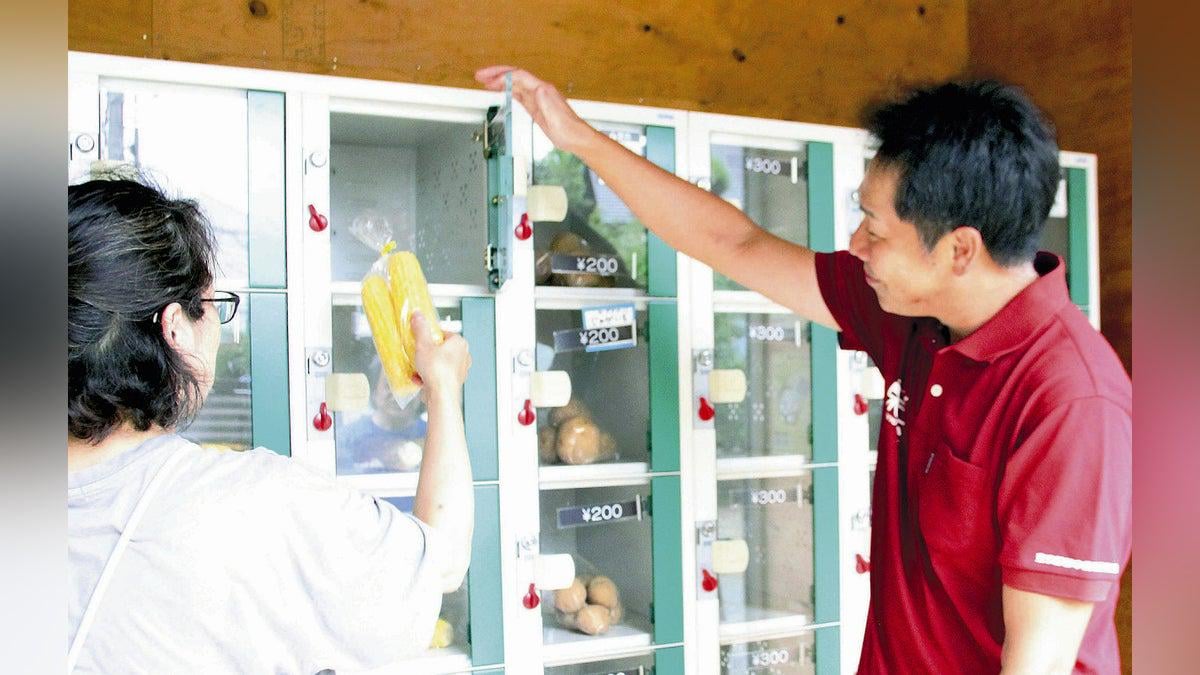
In Tokyo, where farmland and the number of farmers are shrinking, coin-locker–style vegetable stands are quietly spreading. The lockers, which open when customers insert coins, became popular during the pandemic as a “contactless” shopping option and are also proving effective against theft.
In Nerima Ward, a hub for urban farming, residents line up in the morning to buy freshly harvested corn, potatoes, and okra at low prices—two ears of corn for ¥200, potatoes for about ¥200 a bag. Since 2011, the ward has offered subsidies to farmers installing the machines, and nationwide support during the pandemic helped boost their numbers: from 49 in 2020 to 79 this year.
Other districts are following suit. Setagaya added 10 new machines this year, and Kiyose officials say the lockers help keep produce fresher than open-air stands. Ome began subsidizing them in 2020, and 10 new sites have since opened.
Farmers say the lockers cut down on theft and boost efficiency. “I used to worry about stolen vegetables,” said Nerima farmer Takayuki Enomoto, who installed a machine in 2020. “Now I can focus on farming, and my income has gone up.”
The trend also ties into food-waste reduction. In Edogawa Ward, a company called Share Vege runs 13 stands selling produce that would otherwise be discarded, such as surplus scallions for ¥30 or imported grapes for ¥200. Its founder, Ken Takao, says demand has risen with inflation: “We connect sellers who don’t want waste with consumers who need affordable food.”
Once a niche experiment, these coin-locker farm stands are becoming part of Tokyo’s urban food economy.
by MagazineKey4532
